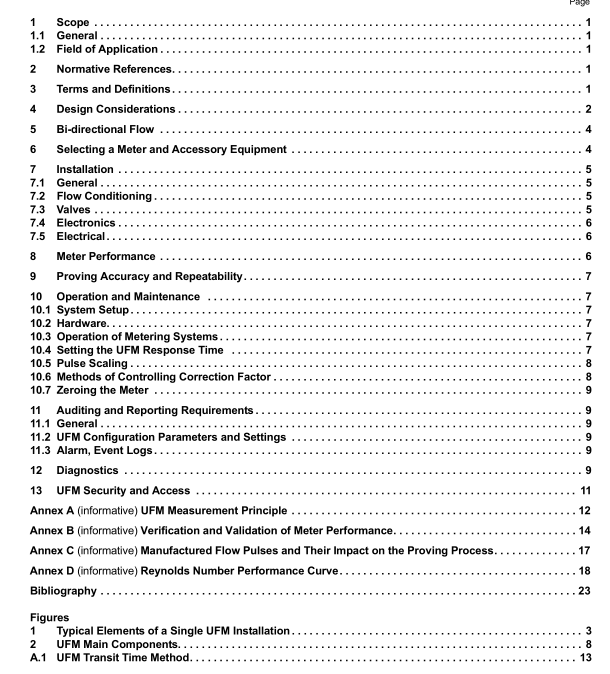API MPMS 5.8 pdf download

API MPMS 5.8 pdf download Manual of Petroleum Measurement Standards Chapter 5.8 Measurement of Liquid Hydrocarbons by Ultrasonic Flow Meters
7.3.3 Valves, particularly those between the meter and prover (e.g. the stream diversion valves, drains, and vents) require leak proof shutoff, which may be provided by a double block-and-bleed valve with telltale bleed.
7.4 Electronics The UFMs electronics system, including power supplies, microcomputer, signal processing components and ultrasonic acoustic transducer excitation circuits, may be housed in one or more enclosures mounted locally or remotely to the meter and is referred to as the Signal Processing Unit (SPU). It shall be designed and installed to meet the applicable hazardous area classifications. The SPU shall operate over its entire specified environmental conditions within the meter performance requirements.
7.5 Electrical
7.5.1 The electrical systems shall be designed and installed to meet the applicable hazardous area classifications.
7.5.2 The pulsed data transmission systems shall be designed to provide appropriate fidelity and security. See API MPMS Ch. 5.5.
7.5.3 UFMs and their interconnecting cables are all susceptible to Electromagnetic Interference (EMI). Since the electrical signals of the UFMs are at relatively low power levels, care must be taken to avoid interference generated from nearby electrical equipment and wiring. UFMs employ various materials and methods to provide shielding against EMI. Cable jackets, rubber, plastic and other exposed parts shall be resistant to ultraviolet light, oil and grease.
7.5.4 Poorly designed cathodic protection and grounding systems can be sources of potential interference with the UFM signals.
7.5.5 An un-interruptible regulated power supply (UPS) shall be provided for continuous meter operation.
8 Meter Performance
8.1 Meter factor shall be determined by proving the meter at stable operating conditions (i.e., essentially constant: flow rate, density, viscosity, temperature, and pressure). API MPMS Ch. 4.8, may provide guidance in this area. Users typically determine the acceptable deviation limits of these operating conditions.
8.2 Proving is primarily a function of regulatory and contractual requirements and typically standard company operating procedures. Proving conditions shall be as close to the actual metering conditions as practical. The essential purpose of proving is to confirm the meter’s performance at normal operating conditions. Most UFMs provide a means of adjusting for the changes in the geometry of the meter caused by changes in body temperature. By employing this feature, reproving necessitated by temperature changes may be reduced or eliminated. Questions often arise concerning the differences between proving or calibrating a meter in a laboratory (bench) versus in-situ (field). These two proving locations can produce different results and cannot necessarily be interchanged without introducing measurement error.
8.2.1 In-situ proving is normally preferred because it verifies the meter’s accuracy under actual operating conditions. Operating conditions can affect a meter’s accuracy and repeatability. In-situ proving at stable operating conditions compensates for variations in performance caused by flow rate, viscosity, density, temperature, pressure, as well as flow conditions, piping configurations, and contaminants.
8.2.2 Laboratory proving is normally not preferred because laboratory conditions may not duplicate the piping and operating conditions. While there are more measurement uncertainties associated with laboratory proving, under certain conditions, it may provide the best alternative.
9 Proving Accuracy and Repeatability 9.1 Proving accuracy can be affected by the delayed manufactured flow pulses from a UFM. These delayed manufactured flow pulses can lead to a bias error in the calculated meter factor depending upon the magnitude of the flow rate change that occurs during the proving run and the duration of the prove run. This potential problem is explained in detail in Annex C. Master meter proving of an ultrasonic meter as per API MPMS Ch. 4.5 may be applied, provided the additional uncertainty typically associated with master meter proving is acceptable to the parties involved.
9.2 Proving run repeatability is used as an indication of whether the proving results are valid.









